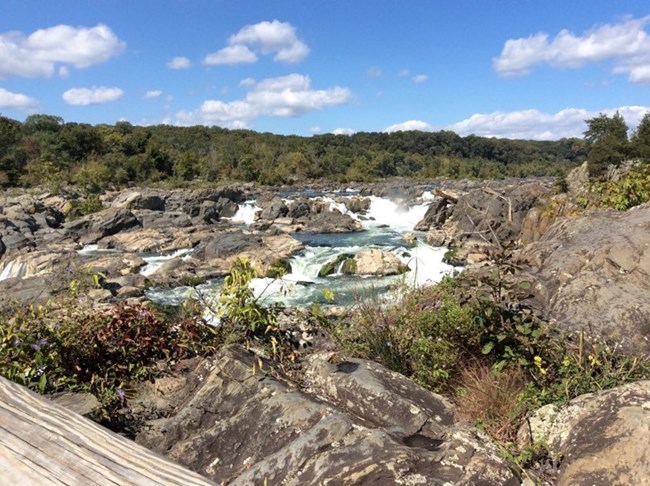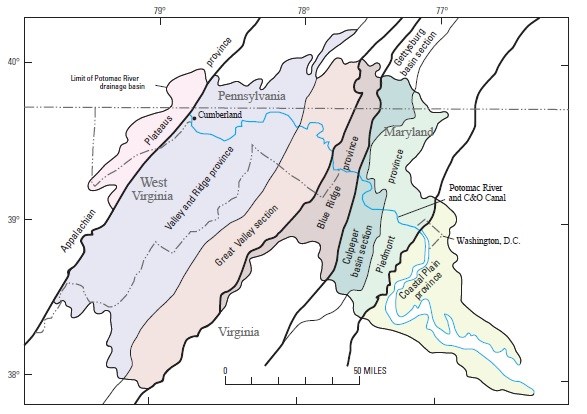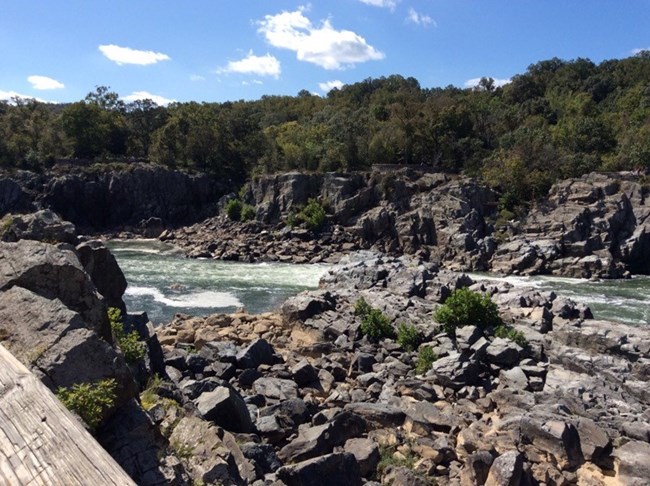
NPS / Nanette Nyce Great Falls is located about 14 miles upriver from Washington, DC and is slightly westward of the boundary of between the Appalachian Piedmont and the Atlantic Coastal Plain. This boundary (also known as the Atlantic Seaboard Fall Line) extends from Alabama to New Jersey. As rivers move from the harder Appalachian Piedmont onto the softer Coastal Plain, they drop suddenly because the material in the Coastal Plain erodes more quickly. This quick drop powered early water mills and factories which in turn led to the growth of many cities like Philadelphia, Pennsylvania; Washington, DC; and Columbia, South Carolina.

Courtesy of United States Geological Survey, Professional Paper 1691 His vision and efforts eventually led to the Chesapeake & Ohio Canal. Today we enjoy the C&O Canal National Historical Park and its preservation of both cultural and natural treasures. 
NPS / Nanette Nyce At this point on the Potomac River, the harder older rocks of the Appalachian Piedmont resisted erosion, but the softer younger rock of the Atlantic Coastal Plain downriver eroded more quickly, resulting in a steep drop. The Potomac drops over 76 feet, or the equivalent of a seven story building over the course of a mile. The Potomac River is also constricted at this point, going from an average width of 1000 feet to just 75 feet wide as it passes around Olmsted Island. The funneling descent of the Potomac River amplifies its erosive power. This erosion is actually moving the Falls upriver, slowly. Discussion Questions: What types of erosive effects can occur where a harder & softer surface meet each other? Where have you seen this in the environment around you? Additional C&O Geology pages: Locks 15-20 | Widewater | Devils Eyebrow | Purplehorse Beach | Pothole Alley | Flooding | Lamprophyre Dikes | Mather Gorge | Paw Paw Tunnel | Cumberland Coal |
Last updated: September 6, 2023
